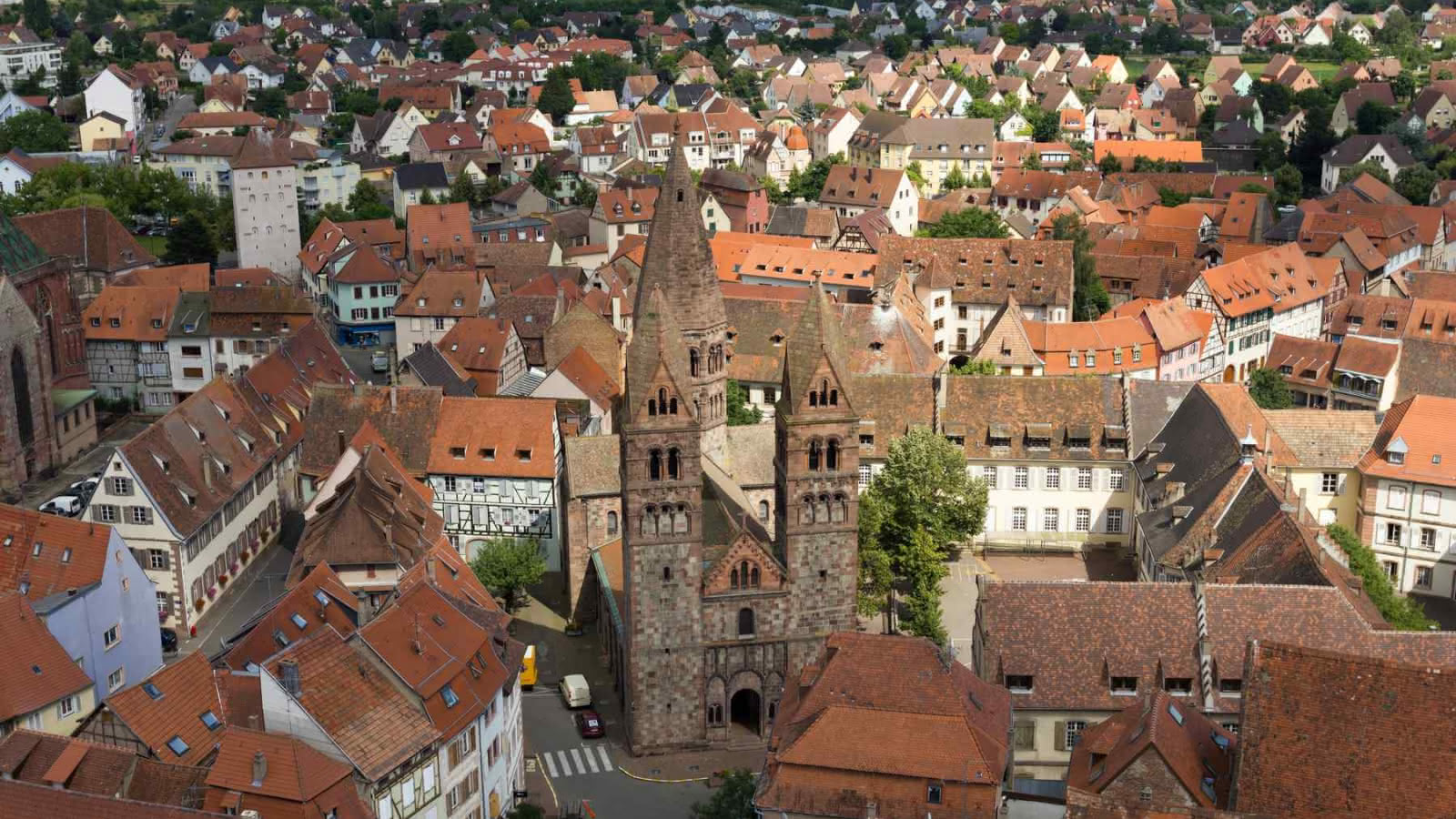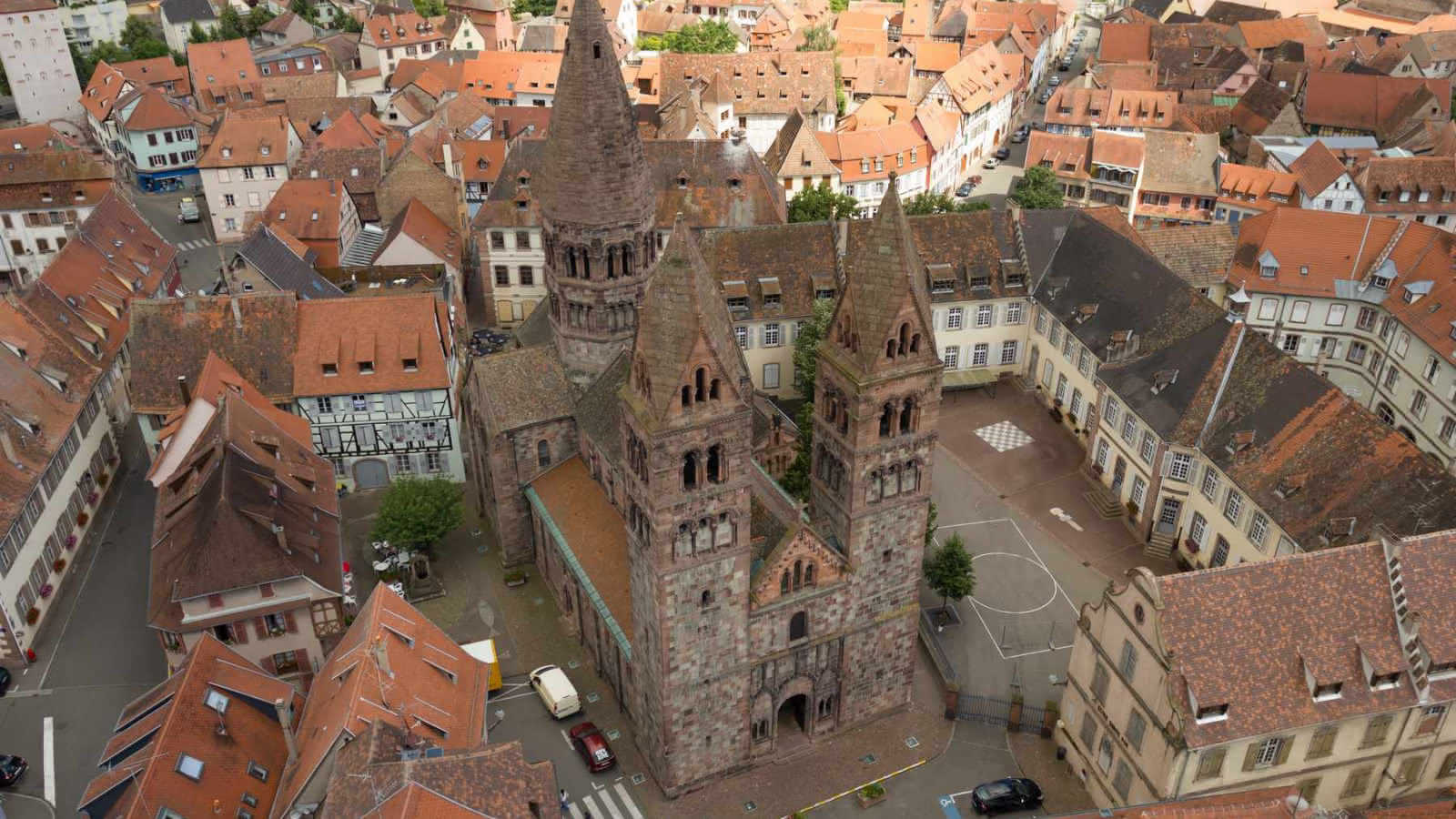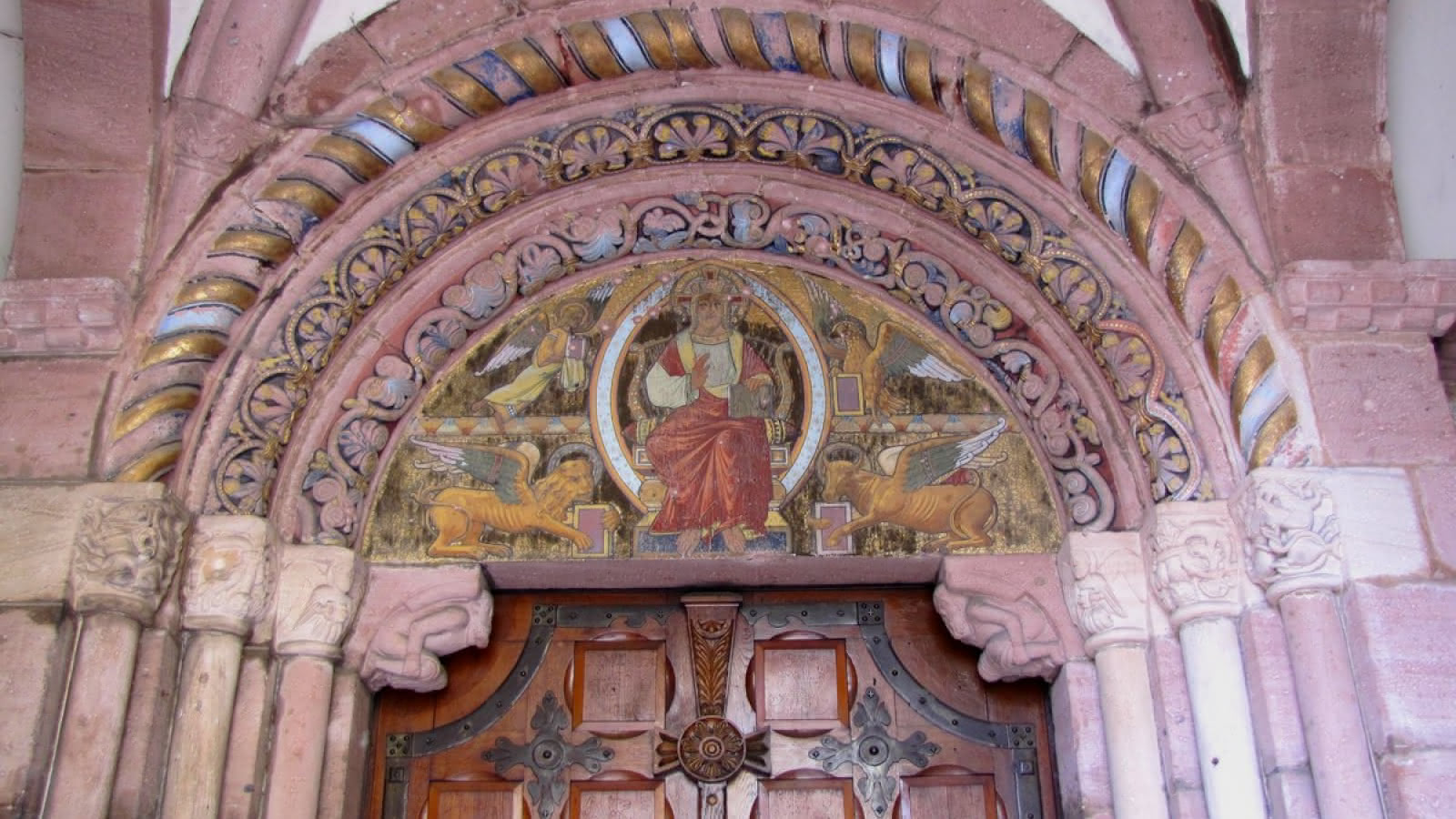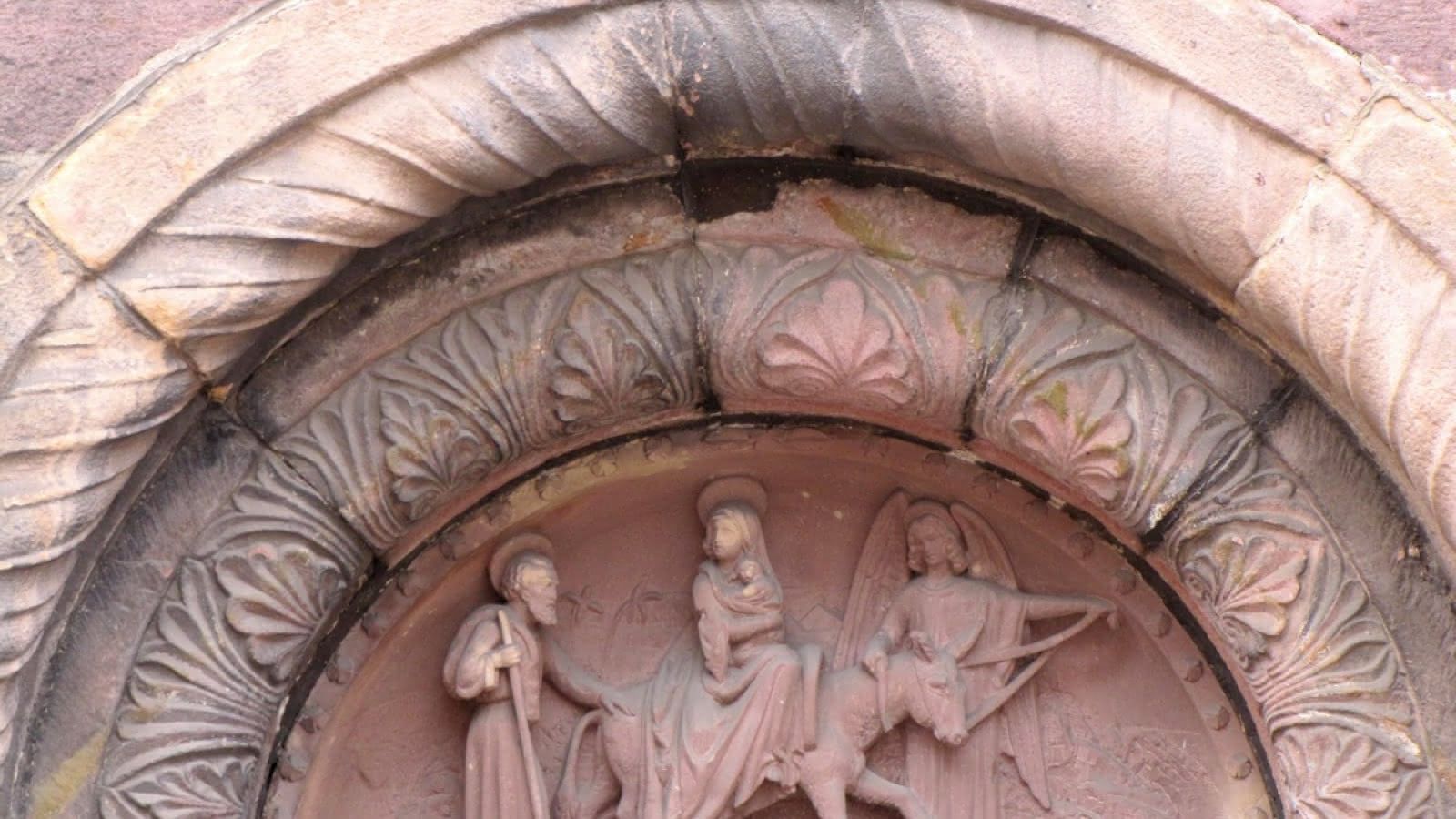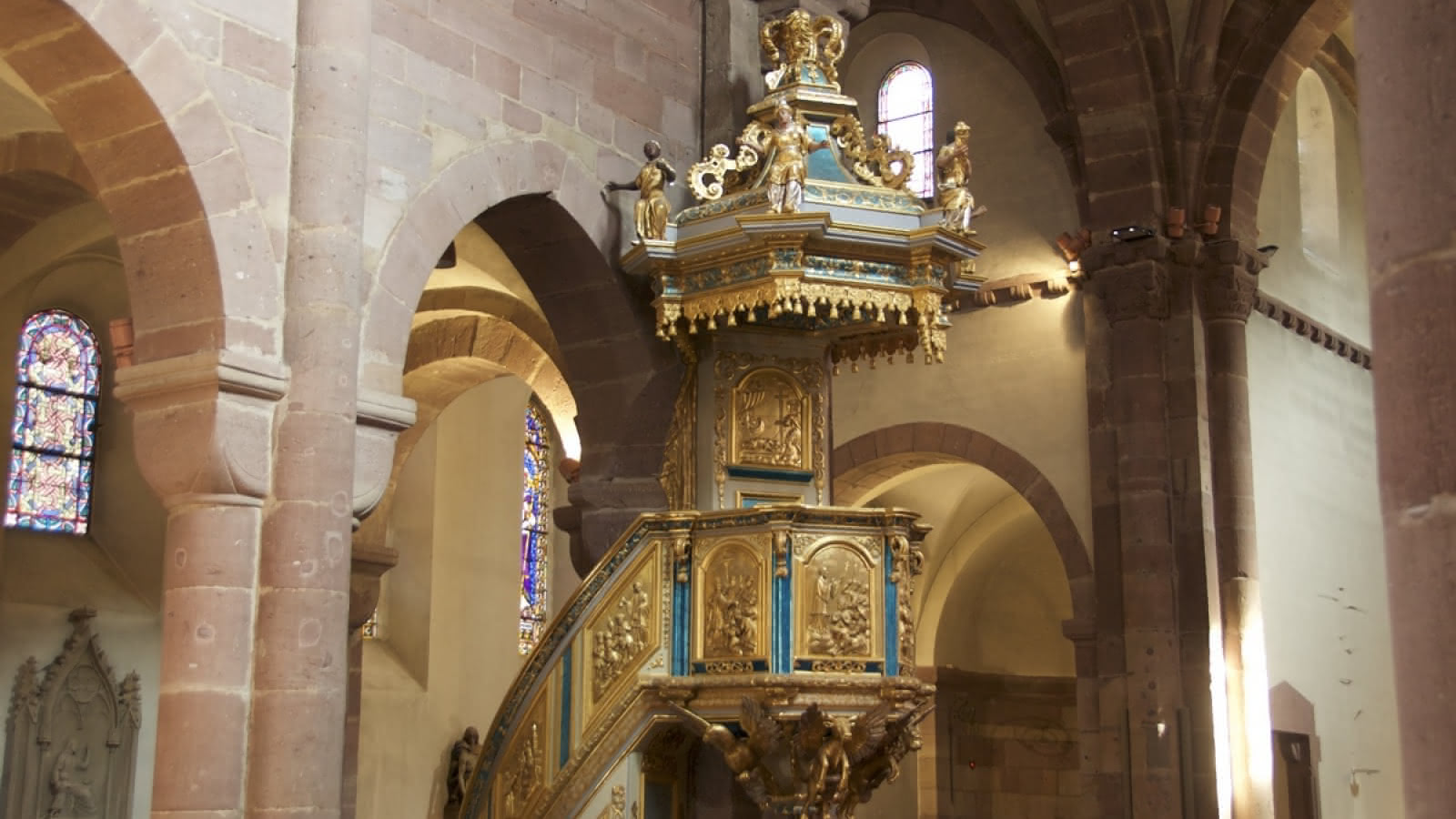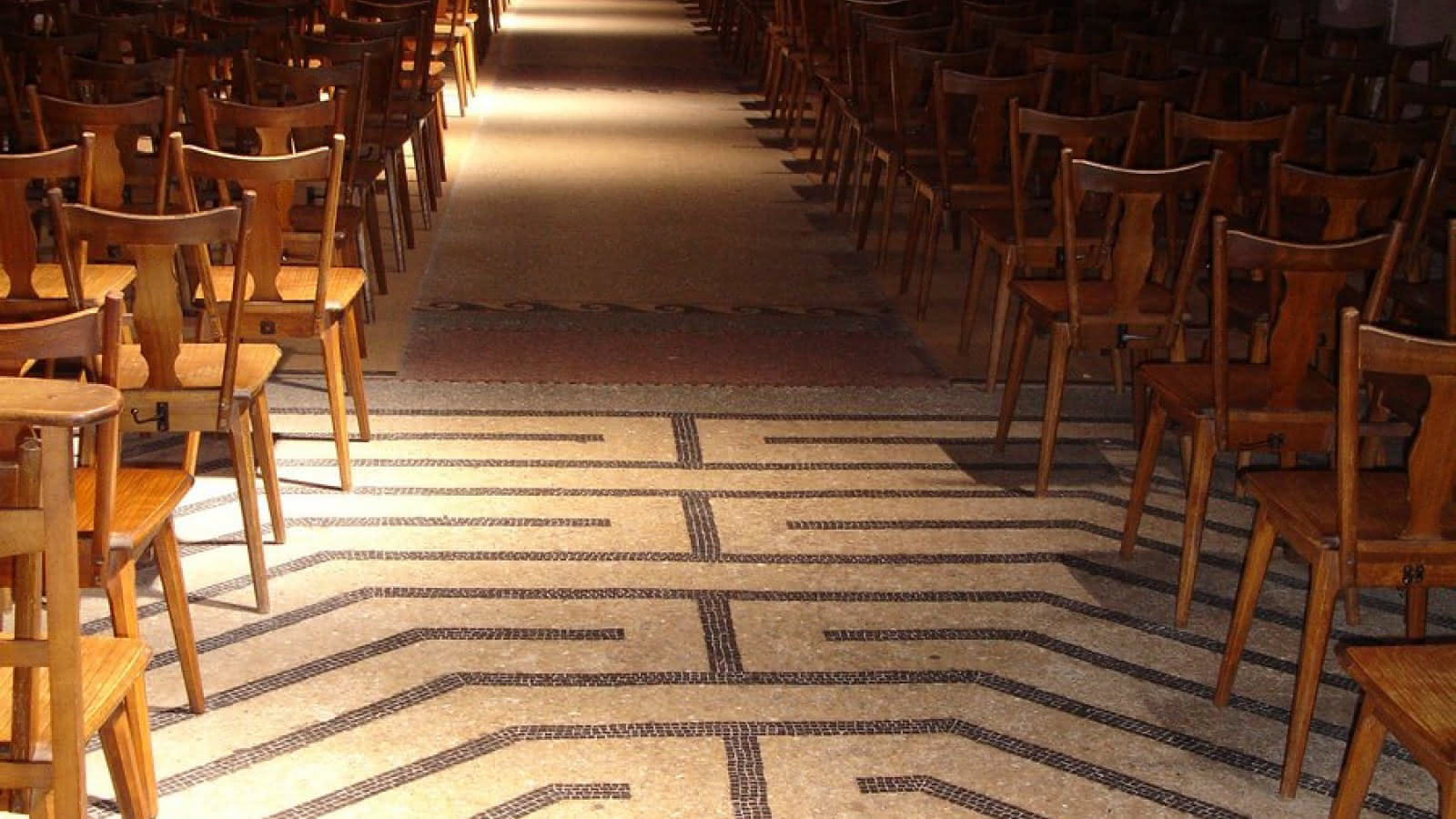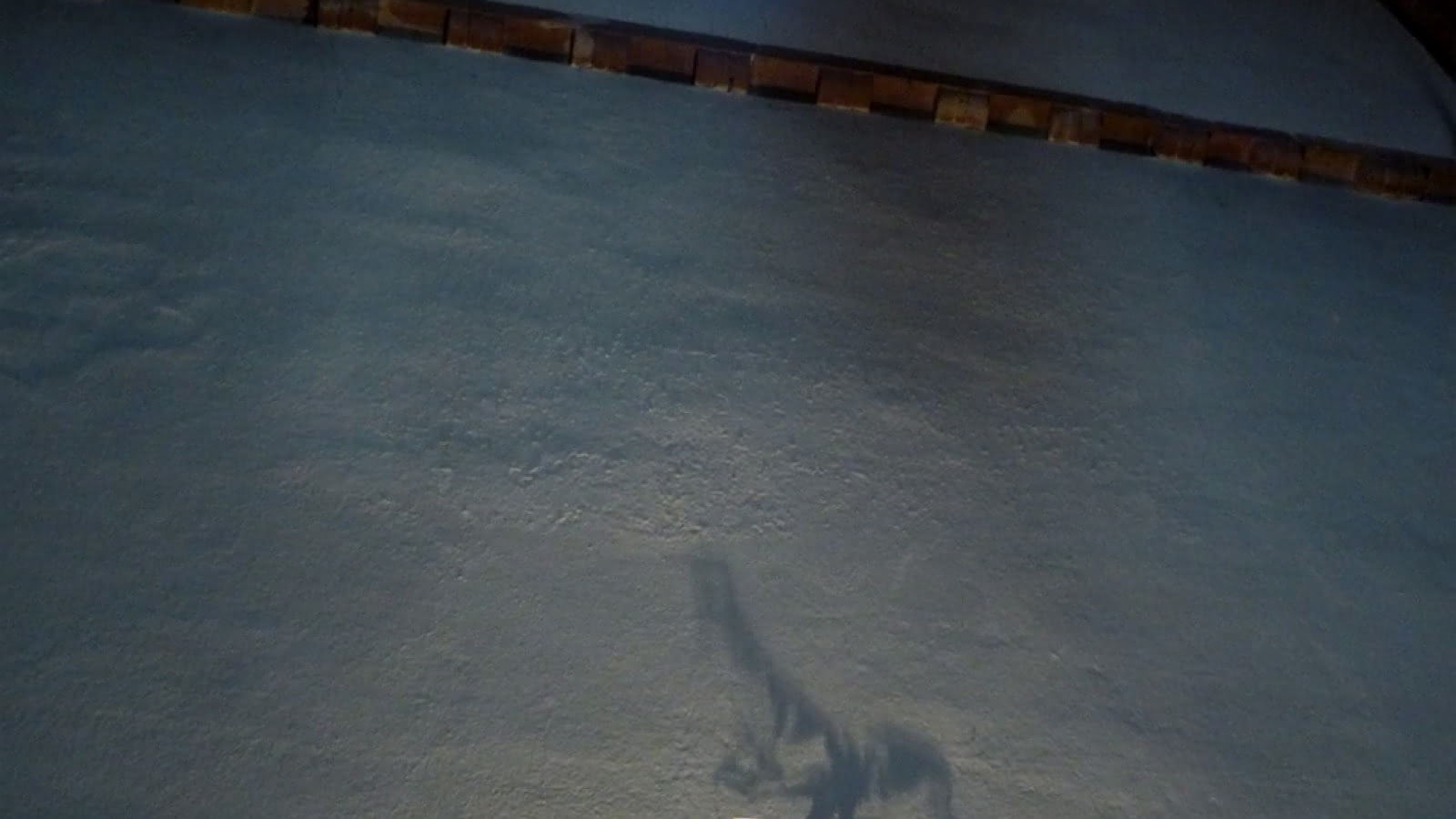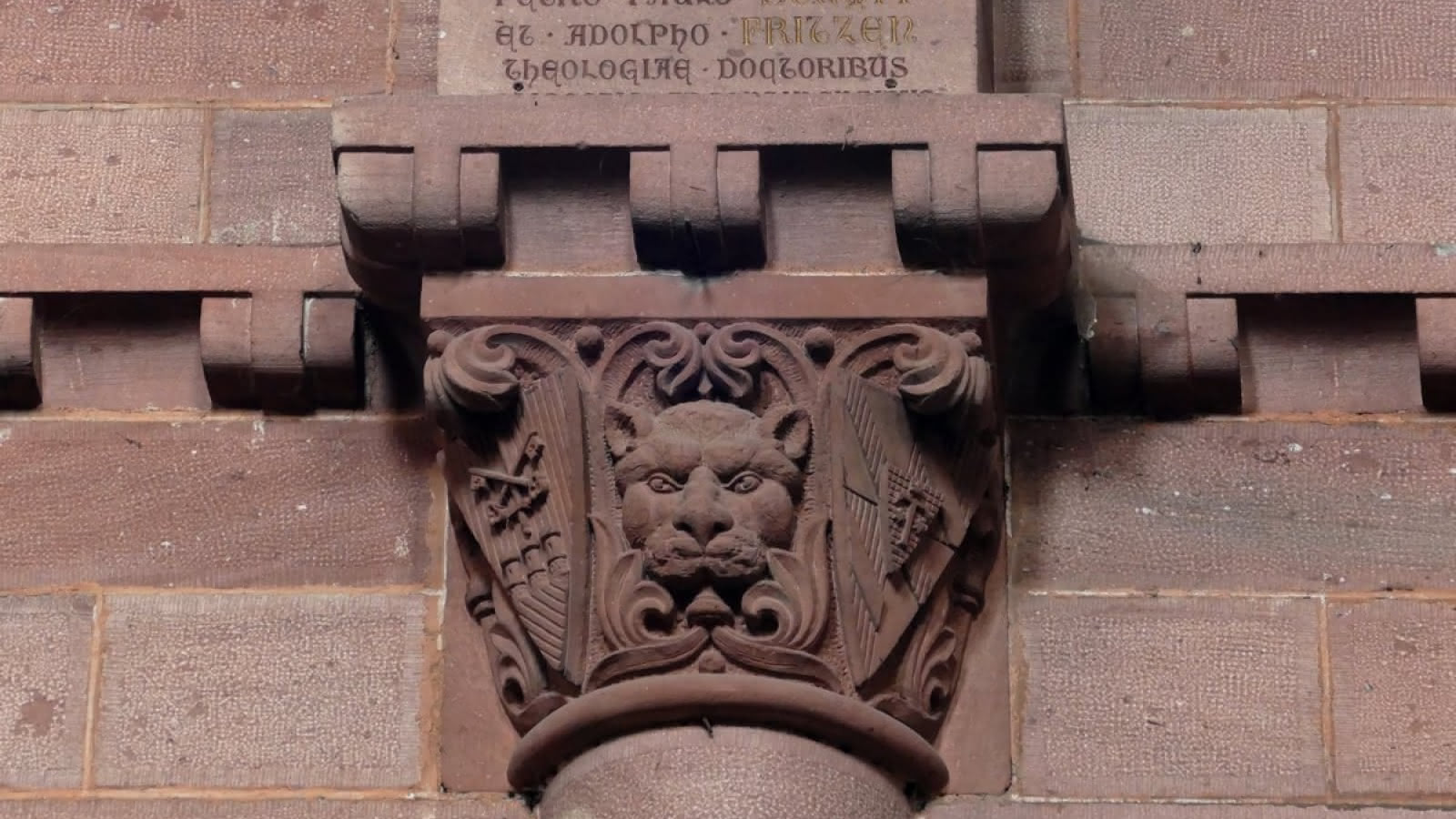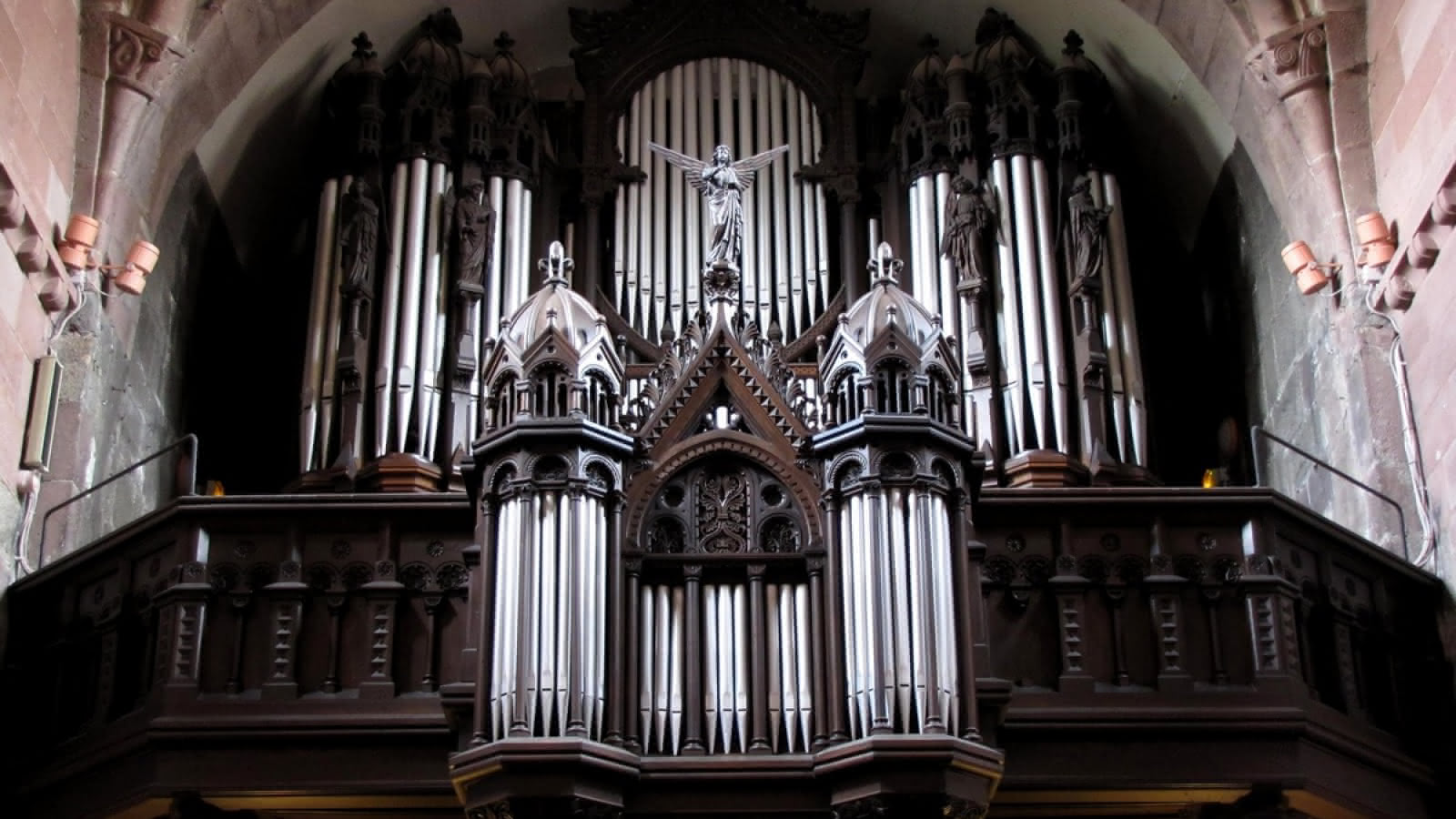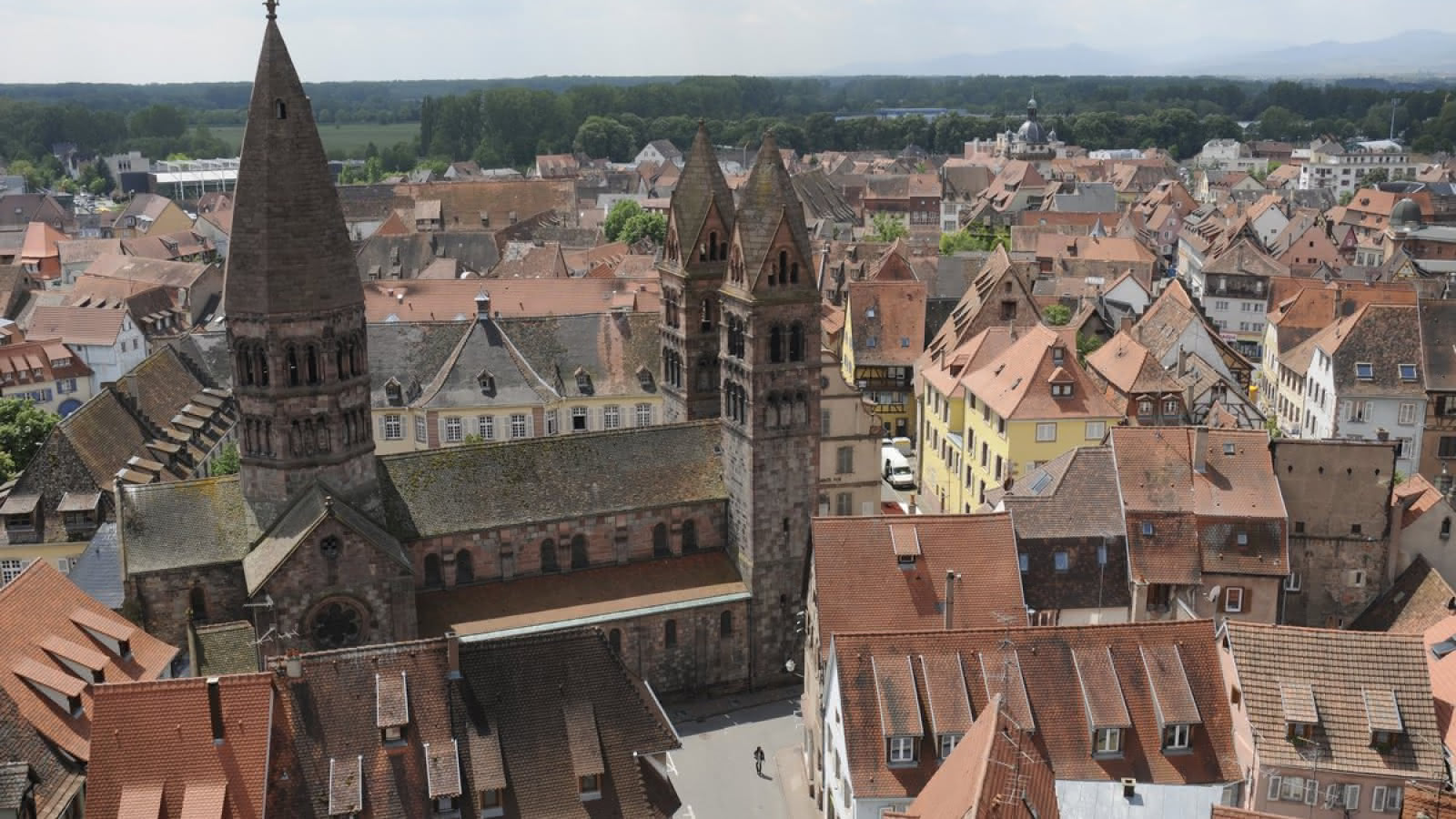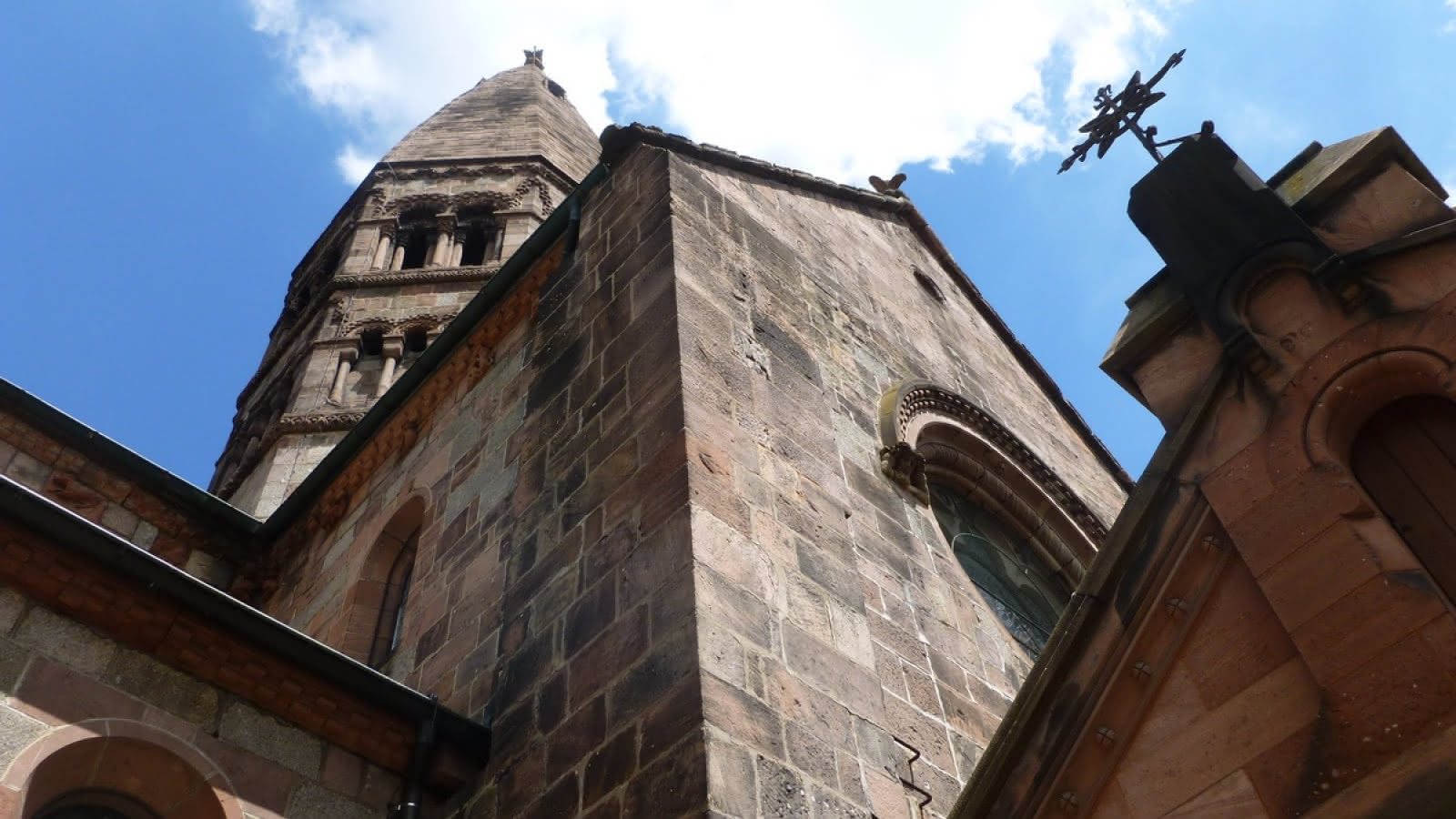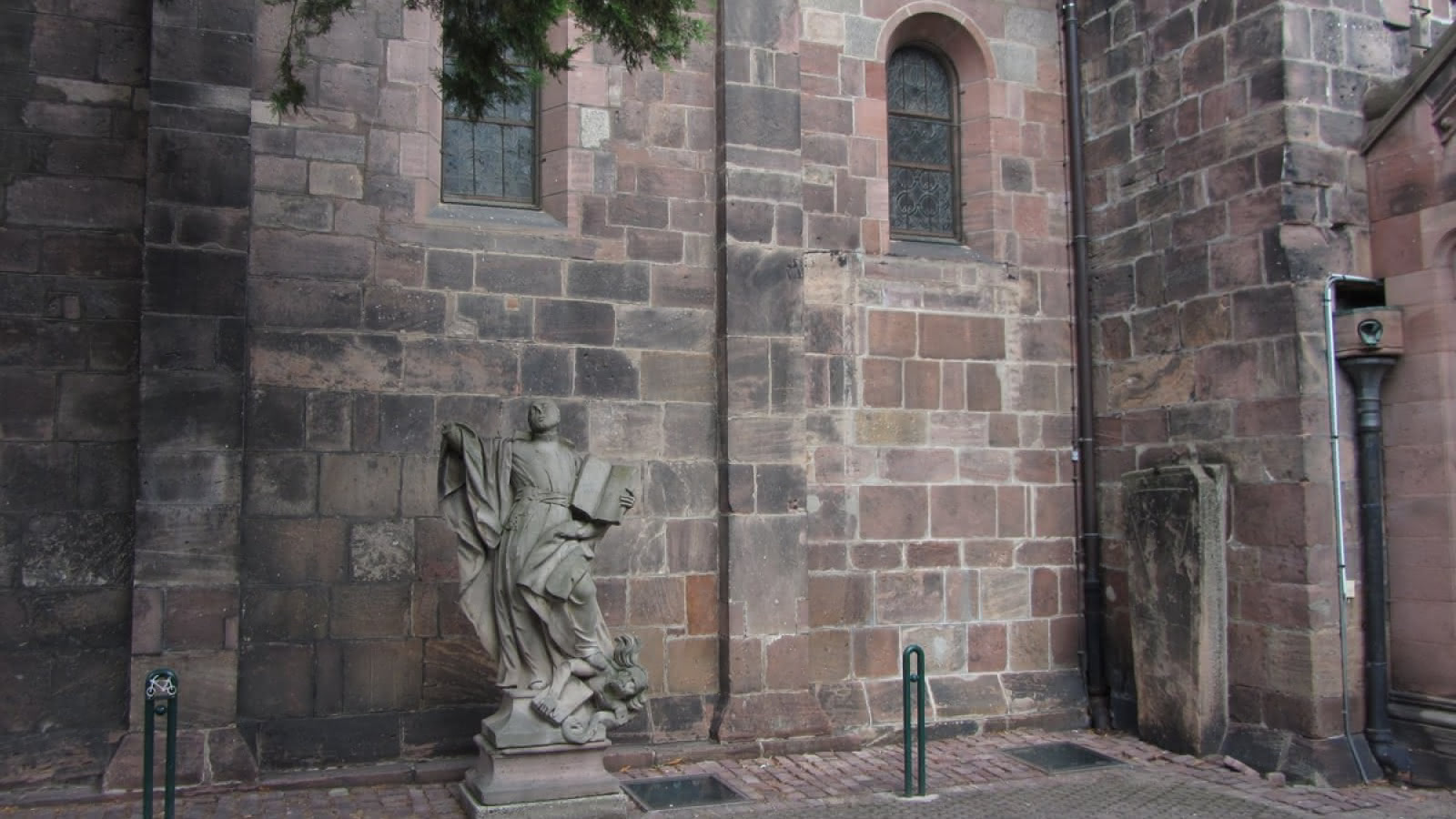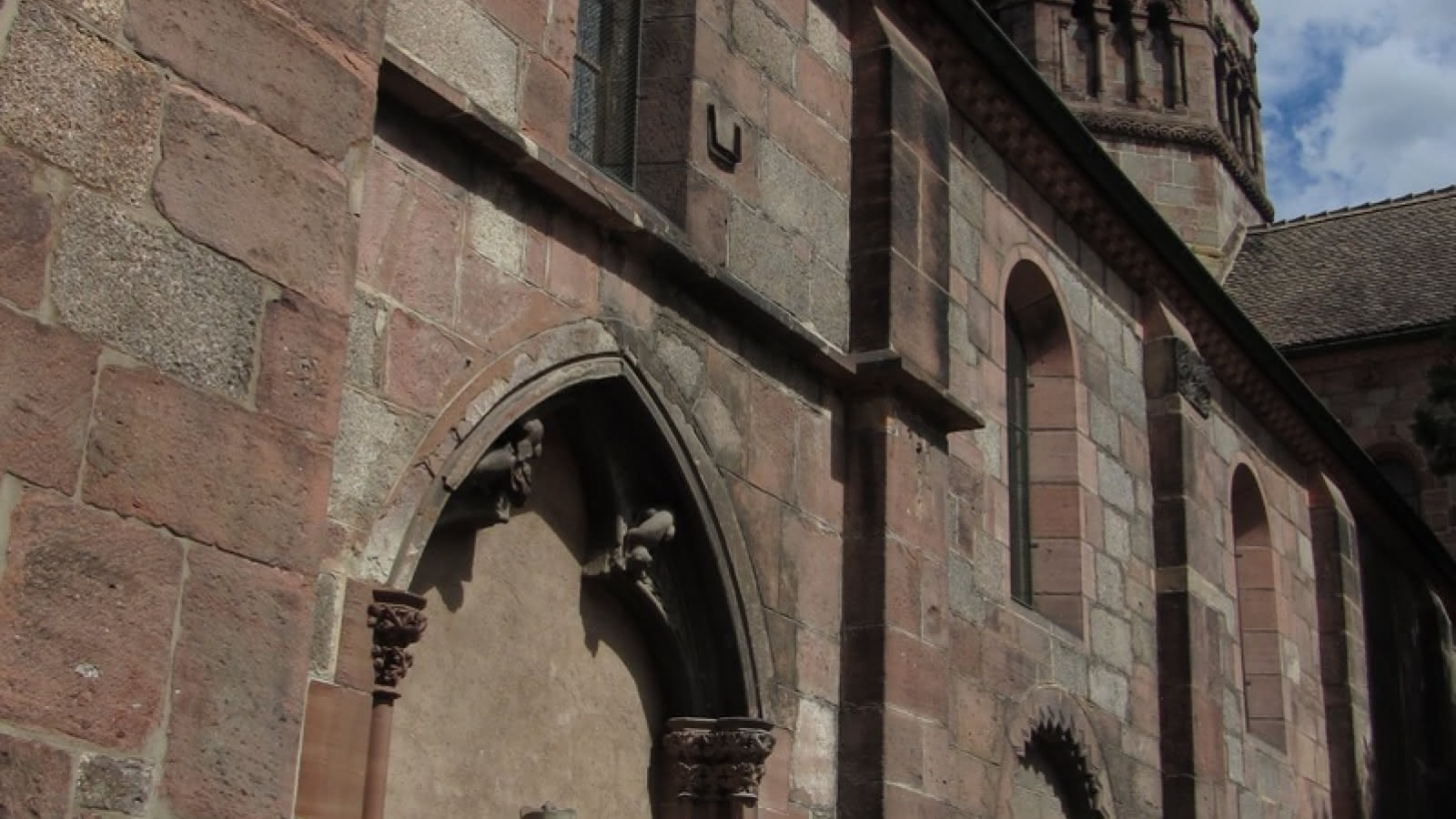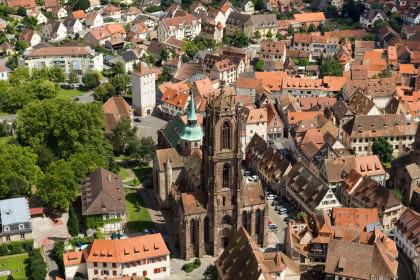St. Faith's Church (Eglise Sainte-Foy)
" 
The church of Sainte-Foy is an important part of the Romanesque route through Alsace and is one of the oldest buildings in the town. It has not remained unchanged since it was built in the 12th century.
Hildegarde de Buren, great-grandmother of Emperor Frederick Barbarossa, founded a small chapel here in 1087 and donated it in 1094 to the Abbey of Sainte-Foy in Conques, Rouergue. A few monks later came to settle in Sélestat. They soon found themselves cramped for space and in the 12th century began to build the Sainte-Foy priory.
In the 17th century, they were replaced by a Jesuit community which redesigned the church in the Baroque style, before the Germans intervened at the end of the 19th century.
The architect Charles Winckler, who was in charge of the restoration work, removed the Jesuits' work and returned the church to its original appearance, but added two typically Germanic spires to the façade.
The crypt under the transept remains from Hildegard de Buren's church. In it, a strange mould of a death mask found during work in the crypt in 1893 can be discovered. The identity of the person from whom the moulding came has been the subject of much speculation. Could it be Hildegard or her daughter? It is difficult to say. That is why it is called "The Beautiful Unknown of Selestat".
Contemporary work in the choir: Volante VI & Volante VII by Fabrizio Corneli. You have to press the switches on either side of the altar to see it.
- Altitude : 174m
- Distance to the nearest station (km) : 1,1km
- Type of visits proposed : Free visit, Guided tour for groups with reservation
- Practical services : Group reception


